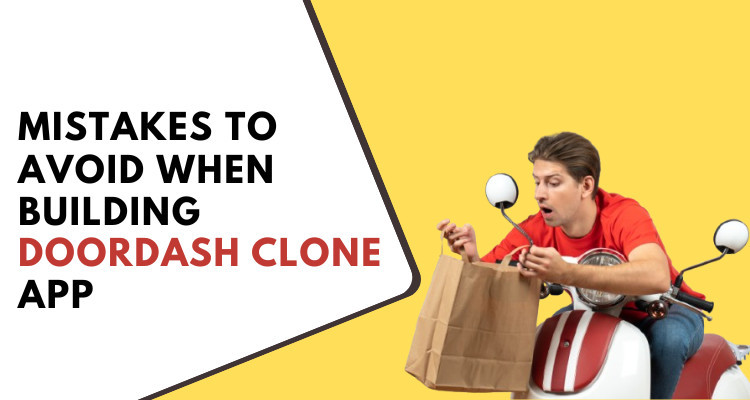
Creating a food delivery app like DoorDash might seem simple at first. Just connect hungry people with local restaurants, add some tracking, and you're done—right? Not really. The food delivery business is very competitive, and even small mistakes can cause big problems.
If you're building your first like DoorDash clone app, it's important to avoid common mistakes that many beginners make. Let’s look at what those mistakes are and how you can avoid them.
1. Skipping Market Research
Jumping straight into development without studying the market is one of the biggest mistakes you can make. It’s tempting to think your app idea is unique, but unless it solves a real problem or serves a specific niche, it might not survive long.
What to do instead:
Analyze existing players in your target market.
Identify gaps in service quality, pricing, delivery speed, or customer experience.
Understand local food habits and preferences.
2. Ignoring the MVP Approach
Trying to build a full-fledged app loaded with every imaginable feature from the start is a recipe for delays and budget blowouts.
What to do instead:
Start with a Minimum Viable Product (MVP).
Include only core features like user login, restaurant listing, cart, payment, and order tracking.
Gather user feedback and iterate.
3. Poor UX/UI Design
Your app might be powerful behind the scenes, but if it’s clunky, slow, or confusing on the front end, users will uninstall it in a heartbeat.
What to do instead:
Invest in intuitive design and smooth user flow.
Test your app with real users to identify pain points early.
Focus on simplicity and speed.
4. Not Optimizing for All Stakeholders
DoorDash-like platforms serve three main stakeholders: customers, restaurants, and delivery partners. Focusing only on the customer side is a common oversight.
What to do instead:
Build separate modules or apps for delivery personnel and restaurants.
Ensure restaurants can update menus, manage orders, and track delivery.
Provide delivery drivers with real-time updates, maps, and earning dashboards.
5. Choosing the Wrong Technology Stack
Using outdated or poorly suited technologies can make scaling difficult and result in higher maintenance costs.
What to do instead:
Choose a scalable backend (like Node.js or Ruby on Rails) and a secure, responsive front end.
Use reliable third-party services for maps, payments, and notifications.
Ensure your app is built to handle real-time updates efficiently.
6. Neglecting Logistics and Delivery Management
A great app won’t help if orders arrive cold or late. Efficient logistics are key to customer satisfaction.
What to do instead:
Integrate smart routing and delivery tracking.
Optimize delivery zones and time slots.
Monitor driver performance and incentivize timely deliveries.
7. Inadequate Testing
Releasing an app riddled with bugs can damage your reputation instantly. Yet, many startups rush this phase.
What to do instead:
Perform rigorous QA testing across devices and operating systems.
Test for edge cases, such as poor internet connectivity or high server load.
Fix major issues before scaling.
8. Overlooking Legal and Compliance Aspects
Data privacy laws, food regulations, and business licenses can vary across regions. Ignoring them can lead to fines or even shutdowns.
What to do instead:
Ensure your app complies with GDPR, CCPA, or other local laws.
Protect user data with secure login and payment processes.
Draft clear terms and conditions for restaurants and delivery partners.
9. Weak Monetization Strategy
A common myth is that growth should come first, and monetization later. But in a resource-intensive business like food delivery, sustainability matters from day one.
What to do instead:
Plan revenue streams—commissions, delivery charges, ads, subscriptions, etc.
Test pricing models with small user groups.
Reinvest early profits into operations and customer acquisition.
10. Ignoring Customer Support
Even the most user-friendly apps will encounter issues. When they do, users expect swift help.
What to do instead:
Provide in-app chat or a 24/7 helpdesk.
Train support teams to handle complaints professionally.
Use feedback to improve services over time.
Wrapping Up
Building a DoorDash-like app is more than just writing code—it’s about understanding the entire ecosystem of food delivery. By avoiding these common mistakes, you increase your chances of launching a successful, scalable, and user-loved platform.
At Peppyocean, we specialize in developing robust, on-demand food delivery app solutions tailored to your business needs. Ready to build your own food delivery app? Keep these lessons in mind, and you’ll be ahead of the game before the first order even goes out. Get in touch with us.
Comments
Post a Comment